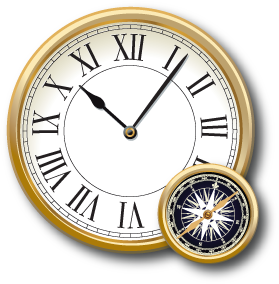The loss of the British Fleet in 1707 near the Scilly Isles provoked demands for safer navigation. Parliament passed the Longitude Act of 1714, which created a panel of experts to oversee rewards for solving the problem of finding longitude at sea.
The Longitude Act of 1714 specified levels of clock accuracy in terms of distance:
• 1st prize (£20,000)
For accuracy of 1/2 degree of longitude, or 30 nautical miles.
• 2nd prize (£15,000)
For within 2/3 degree of longitude, or 45 nautical miles.
• 3rd prize (£10,000)
For within 1 degree of longitude, or 60 nautical miles.
One degree of longitude at the equator equals 60 nautical miles (111 kilometers or 69 miles).
A Breakthrough: John Harrison’s Sea Clocks
A stunning technical breakthrough came when English carpenter and clockmaker John Harrison built five prototype sea clocks between 1735 and 1772. This series of specialized timepieces convincingly demonstrated the feasibility of accurate timekeeping at sea.
Because of Harrison’s improvements in technology, his best clock tested at sea—a large, portable, silver-cased watch—kept time with an accuracy of about 1/5th of a second per day.
Shortly before he died, Harrison received nearly the full £20,000 that England had offered to anyone who could solve the longitude problem—but not until King George III himself intervened. Harrison sent his last sea clock to the king’s private observatory in 1772, where George III witnessed its performance and deemed it prize-worthy.






